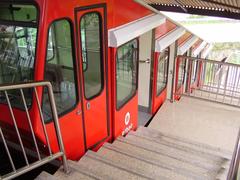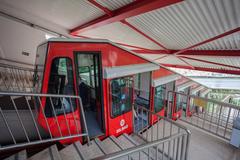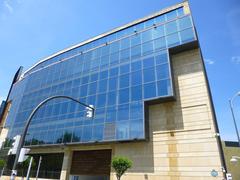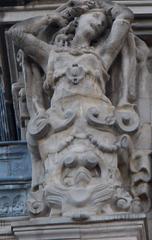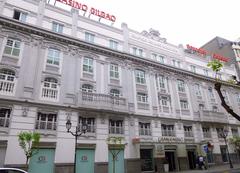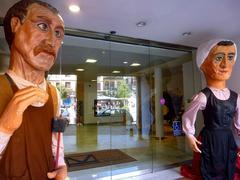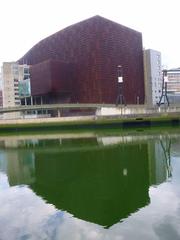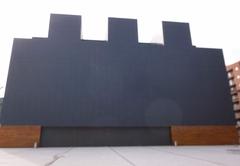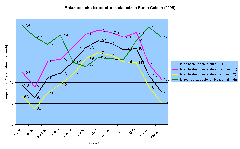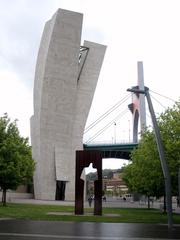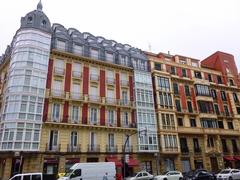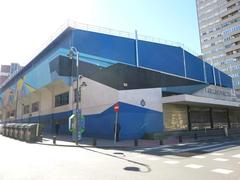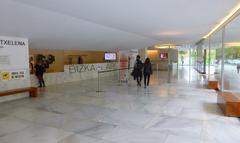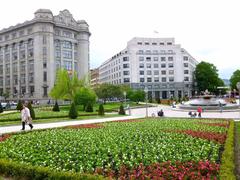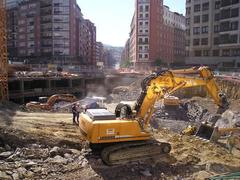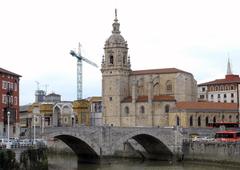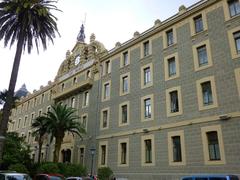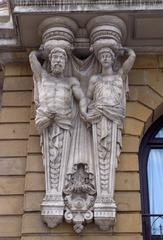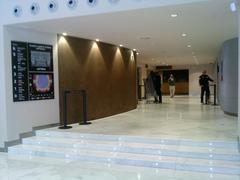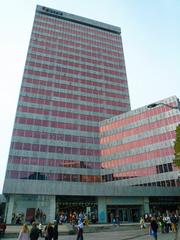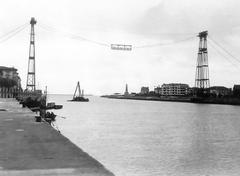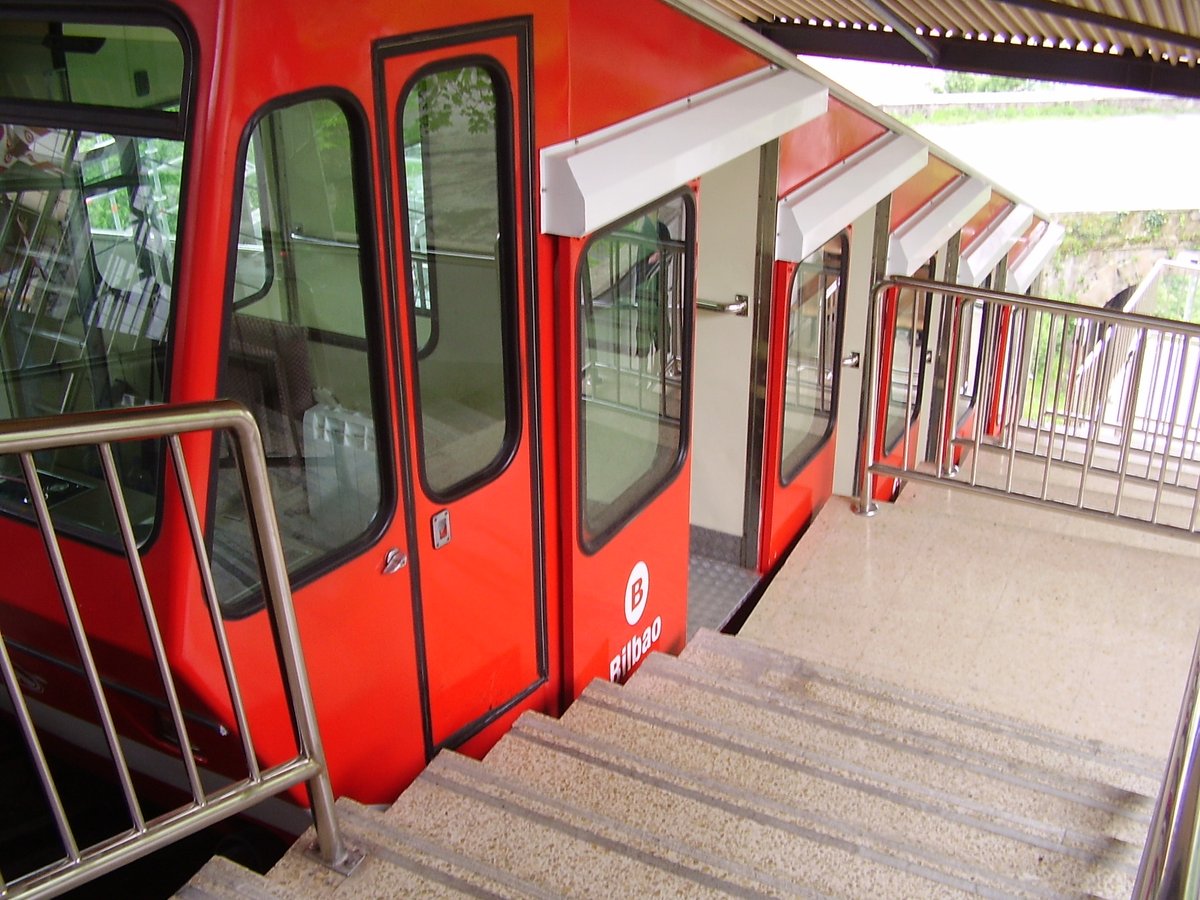
Visiting Artxanda in Bilbao: Hours, Tickets, and Tips
Date: 18/07/2024
Introduction
Artxanda, a prominent hill in Bilbao, Spain, is a destination that seamlessly blends historical significance, cultural richness, and breathtaking natural beauty. Situated just above the city, this iconic landmark offers visitors panoramic views of Bilbao and an array of attractions that cater to history buffs, nature lovers, and cultural enthusiasts alike. The name ‘Artxanda’ is believed to have Basque origins, with ‘Art’ meaning ‘oak’ and ‘Xanda’ referring to a ‘plain’ or ‘plateau,’ hinting that the area was once covered with oak forests. Over centuries, Artxanda has evolved from a strategic vantage point used for defense and wartime battles to a beloved recreational spot featuring parks, restaurants, and various cultural landmarks. Today, Artxanda stands as a testament to Bilbao’s resilience and transformation, drawing thousands of visitors annually. Whether you’re interested in its rich historical tapestry, scenic beauty, or cultural events, Artxanda offers a unique and memorable experience for all. For more information, visit the Bilbao Tourism website.
Table of Contents
- Introduction
- Early History and Origins
- Medieval Significance
- The Battle of Artxanda
- Post-War Period and Urban Development
- Modern Era and Cultural Significance
- Visitor Information
- Nearby Attractions
- Accessibility
- Preservation and Conservation Efforts
- FAQ
- Conclusion
- Call to Action
Early History and Origins
Artxanda, believed to have Basque origins, with “Art” meaning “oak” and “Xanda” referring to a “plain” or “plateau,” suggests the area was once covered with oak forests. The hill has long been a strategic vantage point due to its elevation, providing panoramic views of the city and the Nervión River.
Medieval Significance
During the medieval period, Artxanda played a crucial role in the defense of Bilbao. The hill’s strategic location made it an ideal spot for monitoring and controlling access to the city. Historical records indicate that various fortifications were constructed on Artxanda to protect Bilbao from potential invaders.
The Battle of Artxanda
One of the most significant historical events associated with Artxanda is the Battle of Artxanda, which took place during the Spanish Civil War on June 18, 1937. The hill became a battleground between the Republican forces and the Nationalist troops led by General Francisco Franco. Despite the Republican forces’ efforts, the Nationalists eventually captured the hill, leading to the fall of Bilbao shortly thereafter.
Post-War Period and Urban Development
Following the Spanish Civil War, Artxanda transformed from a site of conflict into a recreational and residential area. Notably, the Artxanda Funicular, constructed in 1915, provided a convenient means of transportation between the city center and the hilltop. The Artxanda Funicular remains operational today, offering stunning views of Bilbao and its surroundings.
Modern Era and Cultural Significance
In recent decades, Artxanda has become a symbol of Bilbao’s cultural and historical heritage. The hill is home to several parks, recreational facilities, and landmarks, including the iconic “Bilbao” sign. Artxanda also hosts various cultural events and festivals throughout the year, celebrating the rich traditions and history of the Basque Country.
Visitor Information
Visiting Hours
Artxanda is accessible year-round, though specific attractions like the funicular have defined operating hours.
Tickets
Most areas of Artxanda are free to visit. The Artxanda Funicular charges a modest fare, with tickets available here.
Travel Tips
Wear comfortable shoes for walking and bring a camera to capture the stunning views. Don’t miss a ride on the funicular for a unique experience.
Nearby Attractions
- Bilbao Guggenheim Museum - A short distance from Artxanda, this world-renowned museum is a must-visit for art lovers.
- Casco Viejo (Old Town) - Explore the historical heart of Bilbao with its charming streets and local eateries.
- Doña Casilda Iturrizar Park - A beautiful park perfect for a leisurely stroll or picnic.
Accessibility
Artxanda is accessible to visitors of all abilities. The funicular and other amenities are equipped to accommodate those with mobility issues. Information on accessibility can be found on the Bilbao Tourism website.
Preservation and Conservation Efforts
Local authorities and organizations have undertaken efforts to preserve and protect Artxanda’s natural and historical assets. Conservation initiatives aim to maintain the ecological balance of the area, ensuring that the hill’s flora and fauna are preserved for future generations.
FAQ
- What are the visiting hours for Artxanda? Artxanda is open year-round, but specific attractions like the funicular have defined operating hours.
- How much does it cost to visit Artxanda? Most areas are free; the funicular charges a modest fare.
- What are some nearby attractions? Nearby attractions include the Guggenheim Museum, Casco Viejo, and Doña Casilda Iturrizar Park.
Conclusion
Artxanda stands as a testament to Bilbao’s resilience and transformation. Whether it’s taking a leisurely stroll through its parks, enjoying a meal at one of its restaurants, or simply soaking in the panoramic views, Artxanda provides a memorable experience for all who visit. For more information, visit the Bilbao Tourism website.
Call to Action
Stay updated on Artxanda and other attractions by downloading the mobile app Audiala and following us on social media.
References
- Exploring Artxanda - History, Visiting Hours, and Tickets for Bilbao’s Iconic Hill, 2024, Bilbao Turismo source
- Your Guide to Visiting Artxanda - History, Attractions, and Visitor Information, 2024, Bilbao Turismo source
- Visiting Artxanda - Top Attractions, Funicular Tickets, and Travel Tips, 2024, Bilbao Turismo source
